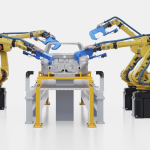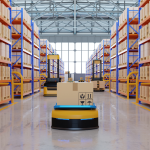AI has the power to transform supply chains, but only if it’s built into the core. Simply layering it onto existing systems won’t deliver results.
Why AI Needs to Be Integrated, Not Added On
Supply chain leaders are under growing pressure to adopt AI, with vendors promising major efficiency gains. Many companies respond by layering AI onto their existing technology, hoping to unlock smarter decision-making. But intelligence can’t just be attached to outdated systems. AI only delivers real value when it is embedded, with direct access to network data and the ability to act in real time.
A common misstep is treating intelligence and visibility as separate challenges. Some businesses attempt to improve visibility by pulling data from multiple sources—often with delays—before applying AI to make predictions. By the time insights surface, the moment to act has already passed. Without full integration, AI becomes just another tool producing reports, rather than a system that enables proactive decision-making.
AI Needs to Drive Actions, Not Just Insights
A modern supply chain isn’t just about tracking goods—it’s about responding to disruptions as they happen. Every order, shipment, and inventory unit should be continuously updated with real-world status and constraints. AI must operate within this live environment, ensuring that when delays occur, schedules adjust automatically. When inventory levels shift, replenishment strategies adapt in real time. When external disruptions emerge, alternate routes or suppliers are activated before bottlenecks occur.
This level of responsiveness isn’t possible when AI is just an added feature. It requires a fully integrated system, one that doesn’t just generate insights but executes actions based on them.
The Companies That Get AI Right Will Lead
AI won’t replace supply chain professionals, but it will expose inefficiencies in how decisions are made. The companies that thrive won’t be the ones that simply adopt AI tools—they’ll be the ones that embed intelligence deep into their operations, creating a system that continuously senses, analyzes, and responds.
Simply buying into AI hype won’t lead to transformation. AI must be more than an add-on—it needs to be the foundation of how supply chains operate. Those who understand this will gain a lasting competitive edge, while those who don’t will find themselves stuck with expensive tools that never quite deliver on their promises.







